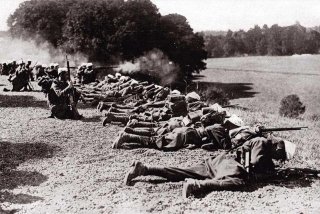Did Parisian Taxi Cabs Really Help Save Paris During the First World War?
True or False: "In the end, the story boosted the morale of the French people and good propaganda is always better than facts."
History is filled with many seemingly fantastical stories – did a Greek army really hide inside a wooden horse and capture the city of Troy? Did Polish cavalry really charge German tanks with lances? Did the French Army really take taxi cabs to rush to the front lines during the First Battle of the Marne in the opening weeks of the First World War and save Paris from imminent capture?
In the case of the first example most historians are dubious whether it really happened, and today it is generally accepted that the Poles attacked a reconnaissance unit and retreated when German tanks arrived.
Yet in the case of the "Taxi Cab Army" the story has been simply repeated enough that it is often taken as an absolute truth: In early September 1914, French military chiefs requisitioned hundreds of cabs and ordered the drivers to get thousands of troops to the front.
That part of the story is largely factual, and in truth, taxis did help transport around 4,000 men or roughly five battalions to the battle. Even 100 years later on 2014, the French government honored the centennial of the "Taxis of the Marine" with a parade of 10 taxis from the era.
However, coverage of the centennial offered much hyperbole, "Parisians could have been speaking German a hundred years ago if a retired general, on the outs with his own bosses, didn't come up with one of the most innovative improvisations in warfare."
Is it really innovative or even an improvisation to commandeer anything that moved including buses?
A bigger problem is that there simply weren't enough taxis to really make that much of a difference in transporting the troops from Paris. In fact, of the 10,000 or so taxis that served Paris in the late summer of 1914, only about 3,000 were in service – largely because the drivers had been recently called up by the French Army.
On the night of September 6, the first group of 250 or so Renault AG1 Landaulets, which could seat five per vehicle, headed out single-file to the front. The vehicles could only average about 20-25 miles per hour, but that was still faster than having the men march the 31 miles from Paris.
The Battle of the Marne turned out to be a decisive victory for the French and British forces. It essentially stopped the German advance, which resulted in the end of the Schlieffen Plan to encircle Paris and knock France out of the war. With a gap between its lines, the German Army was forced to retreat and soon both sides dug in, resulting in the horrific trench warfare that was to drag out of the war for the next four years.
While the Taxis of the Marne has earned a place in the imagination of Parisians for the past century, the significance has been vastly overstated. While various sources have suggested that 4,000 soldiers were "badly needed" reinforcements the numbers need to be put in perspective!
More than a million French and British soldiers – some 64 French divisions and six British divisions – took part in the battle, and more than 80,000 French soldiers were killed while another 170,000 were wounded. While no general would say no to reinforcements the final truth is that the bulk of the French 6th Army's 150,000 men actually arrived near the Marne by train.
In the end, the story boosted the morale of the French people and good propaganda is always better than facts.
Peter Suciu is a Michigan-based writer who has contributed to more than four dozen magazines, newspapers and websites. He is the author of several books on military headgear including A Gallery of Military Headdress, which is available on Amazon.com.

